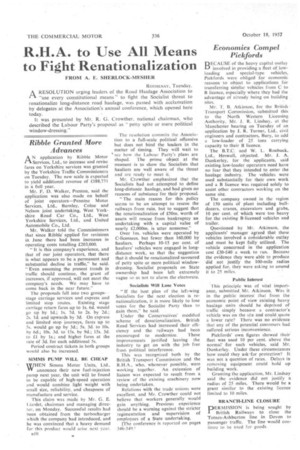Economics Compel Pickfords
Page 44

If you've noticed an error in this article please click here to report it so we can fix it.
BECAUSE of the heavy capital outlay involved in providing a fleet of lowloading and special-type vehicles, Pickfords were obliged for economic reasons to object to applications for transferring similar vehicles from C to B licence, especially where they had the advantage of already being on building sites.
Mr. T. B. Atkinson, for the British Transport Commission, submitted this to the North Western Licensing Authority, Mr. J. R. Lindsay, at the Manchester hearing on Tuesday of an application by J. R. Turner, Ltd., civil engineers and contractors, Bury, to add a low-loader of 25 tons carrying capacity to their B licence.
The B.T.C. and W. L. Roebuck, Ltd., Heswall, objected. Mr. J. A. Dunkerley, for the applicants, said existing low-loader operators need have no fear that they intended to enter the haulage industry. The vehicles were used substantially for their own work and a B licence was required solely to assist other contractors working on the same site.
The company owned in the region of 150 units of plant including bulldozers, cranes, excavators and grabs, 10 per cent, of which were too heavy for the existing B-licensed vehicles and trailer.
Questioned by Mr. Atkinson, the applicants' manager agreed that these vehicles involved a cofisiderable outlay and must be kept fully utilized. The vehicle concerned in the application cost £30-f40 a week to run. Because the evidence they were able to produce did not justify the 100-mile radius applied for, they were asking to amend it to 25 miles.




















































































































